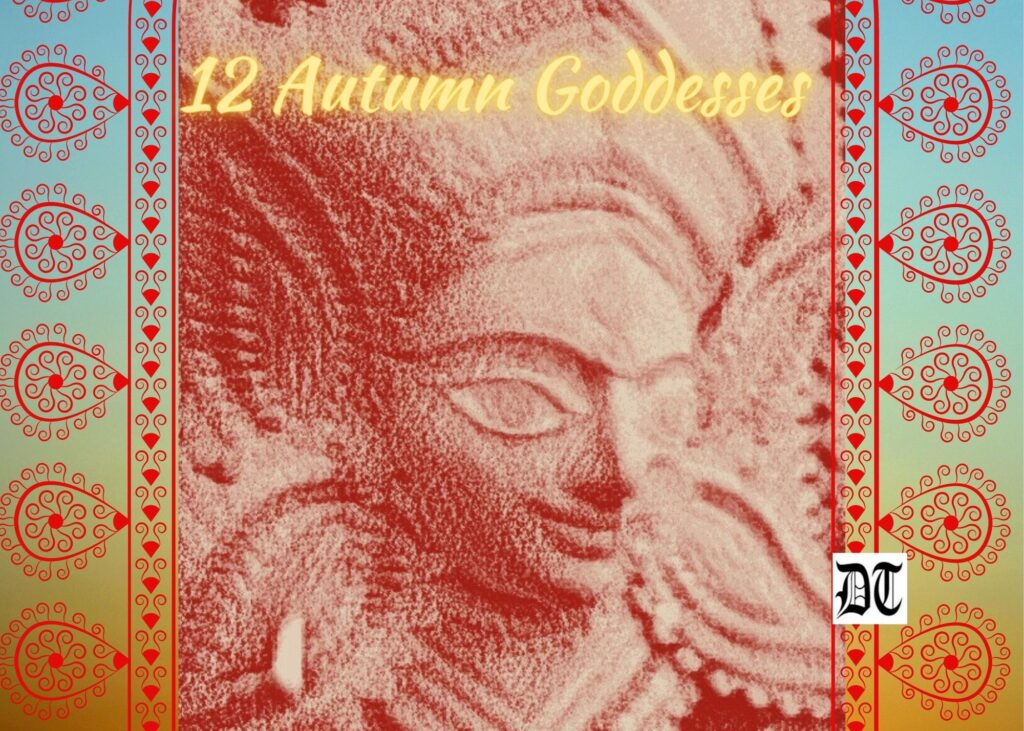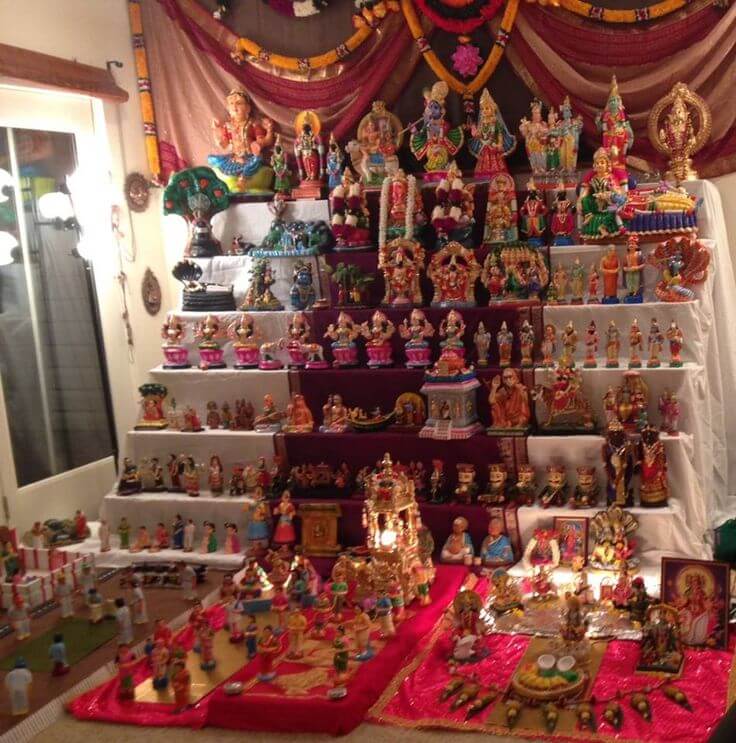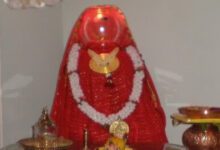takes an overview of the Navaratri celebrations in Gujarat, Bengal, Tamil Nadu and Karnataka – a comparative study. It’s a predominantly women-dominated festival, celebrating Shakti. Navratri is celebrated by observing fast and some all-night bhajans, etc, on a mock staircase called Goluppadi. The author also tells us about the splendours of the festivities in Mysore (Karnataka). This year, with the new Prince on the throne, the celebrations would be many times more. Here are the interesting details, in the Durga Puja special feature, exclusively in Different Truths.

Every Hindu festival has a strong mythological story to it, and largely the essence is, the triumph of good over evil.
‘Navratri’ pronounced ‘Navarathri’ in the South, is also celebrated for the same reason. The festival of ‘Navarathri’ or nine nights has varied celebrations in the North, South, East and Western states of India.
The celebrations may be contrasting, but the love for music, dance, prayers and long hours of festivities are the common factors.
Having spent my childhood in Mumbai, I was more familiar with Ganesha festival, popularly called ‘Bappa Moriya’, (Bappa is father in Marathi) and of course the Gujarati festival of Navratri of nine days of fasting by the really pious and religious folks and all night dancing called Garba and with sticks called Dandiya Raas is performed. Age and caste notwithstanding, around the picture of Goddess Bhawani or Durga, loud, live bands with traditional Gujarati folk songs that have now been replaced by digital music, make people dance in gaiety. Huge shamianas are put up to protect people from rain, wind, etc. The traditional attire of mirror-work ghagras and sequined blouses with eye-catching dupattas worn by women and young girls is a visual feast, for sure. At the end of the dance rounds, usually, around 1am is a Mangal aarti and prasad distributed to one and all.
One fine day, a very dear Bengali friend told me about Durga Puja, called Pujo in Bengali! Oh my, it was educative and interesting, I then understood, that Pujo was not a festival in West and East Bengal, but a phenomenon of huge, artistically designed pandals for Ma Durga, long hours of Puja, aarti, men, women and children in fine clothes, eating strictly vegetarian prasad or Bhog of Ma! Almost five days of the Pujo are spent visiting pandals day and night with family and friends! The last day is Dashami called Shubho Bijoya and what a fine tradition-rich week it is, year after year!
Moving south, in Tamil Nadu and Karnataka, Navrathri is celebrated by observing fast and strict puja schedules, some all-night bhajans, etc are also organised. The most interesting event all the nine days is the arranging of attractive Indian dolls of deities, on a mock staircase called Goluppadi, neatly covered mostly with a white cloth and electric bulbs illuminating the array of dolls!
Golu Bommai is the doll that is placed on a Navarathrippadi (stand) in chaste Tamil. Lots of creative families engage the children in constructing theme based Golu display, like garden waterfalls, weddings of deities like Sita Kalyanam (marriage of Sita), Dasavataram or the ten Incarnations of Lord Vishnu, Krishna Leela or Ravan’s army, et al.
The Golu dolls are collected for years painstakingly, largely from Tanjore, where they are made and some wooden ones made in Channapatna, near Mysore, Karnataka. Many women are gifted dolls by their mothers, during the wedding, to carry on the family tradition in their new homes.
Typically in a Golu arrangement, are two items: one, the Marapachi dolls from Tanjore. It is a dark skinned couple, made of wood, and flat chested. Another is the Chettiar shop or the pot-bellied lentil and grain shop owner, sitting happy and selling his grains. At times, he has his wife by his side too, helping him manage a business.
The Golu is celebrated in the same way in Karnataka too, but it’s called Gombe, which means dolls in
Kannada. The celebrations are marked by ladies and girl-children, bedecked in fine silks and jasmine every evening. Friends and neighbours are formally invited to watch the Golu display.
Normally girls who can sing, are asked to sing songs in praise of Goddess Lakshmi or Durga. Then they are served sweets, coffee or juice, and offered the auspicious ‘Haldi Kunku’ or ‘Arishna Kunku’, which comprises betel leaves, betel nuts or packets of grated betel nuts, banana, and coconut. Some families also pack colorful glass bangles and cash, with each Navrathri tray. The return-goodies vary from family to family, depending on their economic status.
Interestingly in South, the ninth day is celebrated as Saraswathi Puje or Pujai, where all books, musical instruments are surrendered to Goddess Saraswathi, considered the Goddess of Knowledge, art, and music. It is also called Ayudha Puja, where all tools, knives, scissors are placed at her feet for blessings, and on this day, no paper is touched or read.
All vehicles, two wheelers, cars, trucks, vans, etc are washed neatly, vermillion, sandalwood, etc are applied and garlands are put around the vehicles. After prayers outside at the porch, the camphor is placed on a big ash gourd (which has been slit slightly, and coins and vermillion put inside) or white pumpkin, aarti is performed by moving the pumpkin around the cars and vehicles thrice and dropped hard on the ground, at the gate outside, breaking open the pumpkin and the coins are strewn for the poor to collect. Usually, halves of the pumpkins are placed on either side of the main gate.
The tenth day is Dasami or Vijaya Dasami, celebrated as the victory of good over evil and also the beginning of good things, like Akshara Abhyasa or teaching a small child to hold the pencil and write his first word. Those who wish to begin music and dance lessons consider this day, the ideal day to begin training.
Mysore Dasara is the ‘Nadahabba’ or the state festival of Karnataka, called as Navarathri. It is a 10-day festival, celebrated with utmost spectacle and joy in the city of Mysore. The Dasara festivities have a rich history of more than 400 years. The Royal city of Mysore has lavish, pompous celebration at the Mysore Palace, with music, cultural events. It is during Dussehra that the bejeweled, ruling Prince comes around, seated atop the decorated elephant-driven chariot, with thousands of spectators watching the beautiful site. It is the star festival of the year, at the palace venue, with strict security inside and outside on all the days.
This year, the celebrations at Mysore Palace, maybe doubled with the new prince having been married recently, and this year being his first Dussehra, prestigious procession, post marriage. Dussehra ends on the tenth day, all over India, marking a new beginning of truth, honesty and justice to all.
Picture from Pinterest






 By
By
 By
By
 By
By
 By
By